
QST has been conducting research into heavy ion radiotherapy for over 25 years and has conducted it on 15,000 patients. The targeted diseases include localized solid tumors, such as head and neck, lung, liver, prostate, rectal (post-operative), pancreatic, and bone and soft tissue sarcoma cancers. As a result, quality of life (QOL) has been improved by increasing the local control rate and hypofractionation as below.
- Stage I non small cell lung cancer 18 fxs (6 weeks) ⇒ 1 fx (1 day)
- Liver cancer (HCC) 15 fxs (5 weeks) ⇒ 2 fxs (2 days)
- Prostate cancer 20 fxs (5 weeks) ⇒ 12 fxs (3 weeks)
These results have led to the increase in heavy ion radiotherapy facilities in Japan and overseas. Presently, around 3,600 patients are treated annually at 6 facilities in Japan. However, this number is still only 0.4% of new cases in Japan or 0.02% of all new cases in the world.
Delivering greater therapeutic benefits to anyone who needs them, QST will help realize “zero cancer deaths and a healthy, long-lived society” through the development of the "quantum scalpel," which is a cancer surgery using a quantum beam without a real scalpel in a body.

The Quantum Scalpel: a compact and high-performance heavy ion radiotherapy system
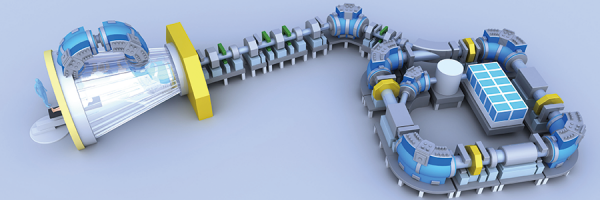
Cancer treatment without compromising the patient’s daily life
The Quantum Scalpel system uses multi-ion irradiation, which combines carbon, oxygen, and helium ions, to make the treatment more effective, with few side effects. In contrast, current heavy ion radiotherapy uses only carbon ions.
The Quantum Scalpel system is a form of hypofractionated irradiation therapy that maintains a high level of QOL for the patient.
Compact enough to be installed in an existing hospital building
Current heavy ion radiotherapy machines are bulky, measuring about 60 m x 50 m, and require a dedicated building. However, by applying QST’s intense laser and superconducting technologies, the injector, synchrotron, and rotating gantry can be downsized to an overall size of 20 m x 10 m, which is small enough to be installed in an existing hospital building. We aim to create a society in which anyone can easily receive advanced cancer treatment at a nearby hospital using our compact and low-cost but high-performance "Quantum Scalpel."
Roadmap to the realization of the Quantum Scalpel system
The first generation of heavy ion radiotherapy machines: Since 1994 in QST-NIRS.
The second- and third-generation machines, which are one-third the size of the first generation, are now in use in Japan.
The fourth-generation machines will be about one-twentieth the size of the first-generation machines, with a compact superconducting synchrotron. It also offers advanced treatment with a multi-ion irradiation system.
The fifth-generation machines will introduce a laser acceleration injector using high-intensity laser technology and a superconducting rotating gantry with a higher magnetic field, and they will reduce the size of the system to around one-fortieth of the first-generation system. We also aim to treat noncancer diseases by installing microsurgery system that can reduce the beam diameter to 1–3 mm and improve the irradiation accuracy to 0.1–1 mm.
Research and Development for Quantum Scalpel

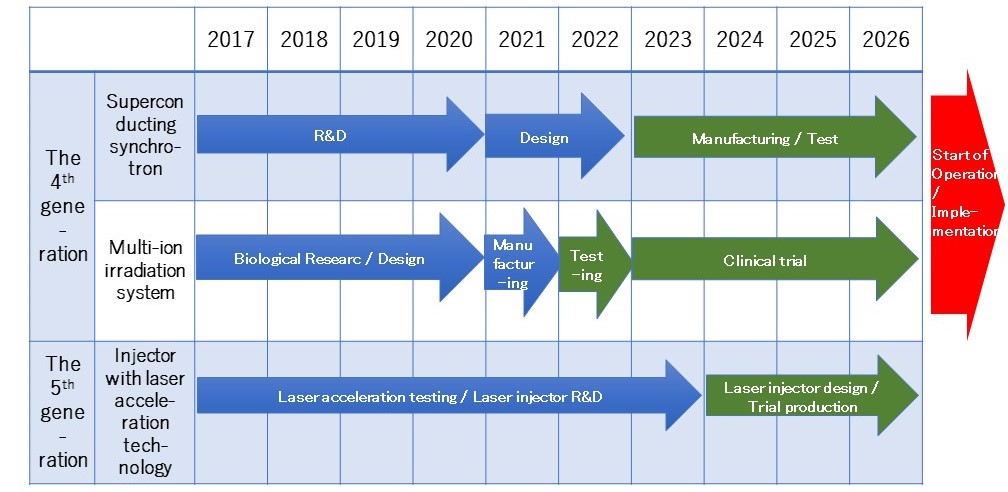
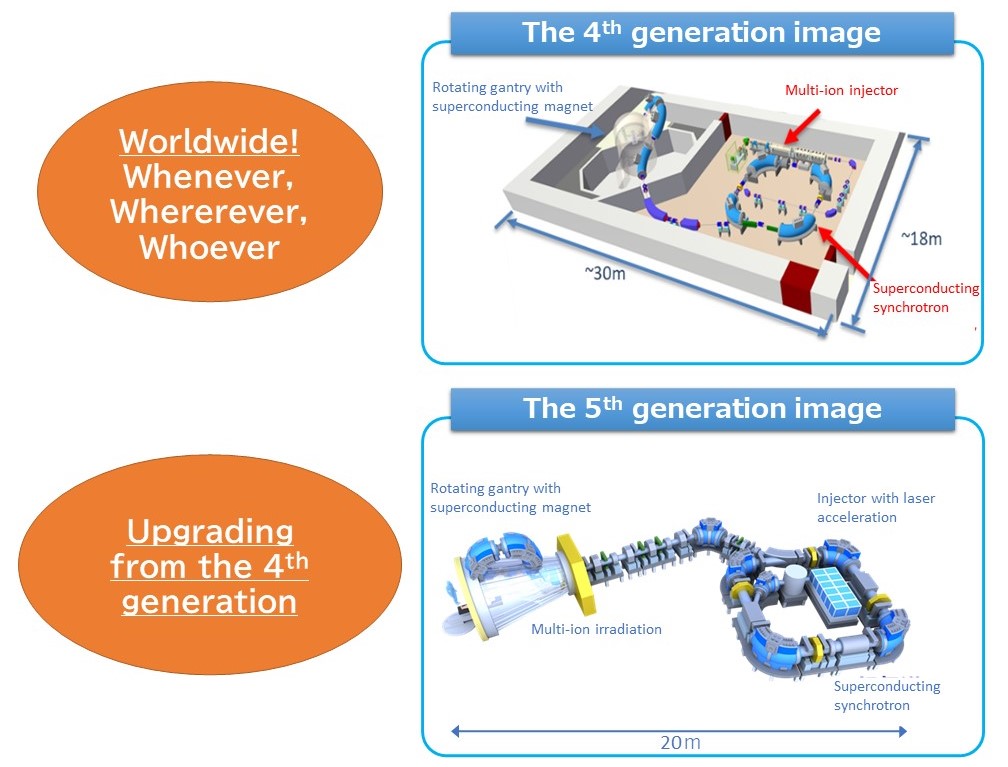
Essential technologies for the development of Quantum Scalpel systems
Superconducting synchrotron
The high magnetic fields produced by superconducting magnets that does not use liquid helium will contribute to a significant reduction in the size of medical synchrotron for heavy-ion radiotherapy to about one-tenth the size of the current 20-m diameter synchrotron.
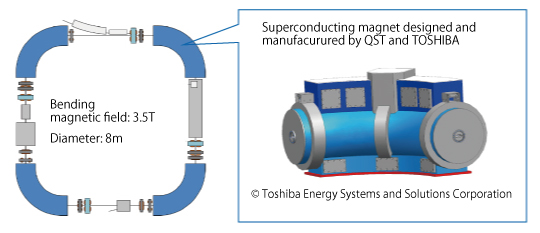
Multi-ion irradiation system
In the multi-ion irradiation system, highly malignant areas within the tumor are irradiated with ions heavier than carbon, such as oxygen and neon ions, while areas adjacent to normal tissues are irradiated with lighter helium ions. In this way it is possible to further improve the control of radioresistant cancers and to spare normal tissue, even with hypofractionated irradiation.
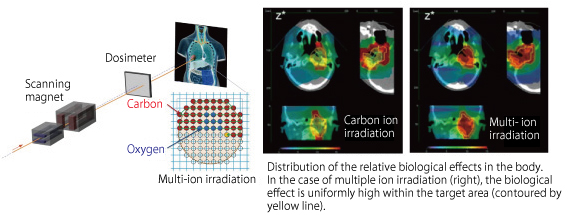
Injector with laser acceleration technology
Using laser-driven ion acceleration technology, the length of the injector is reduced to one third from around 15 m, which is the length of conventional linear accelerators.
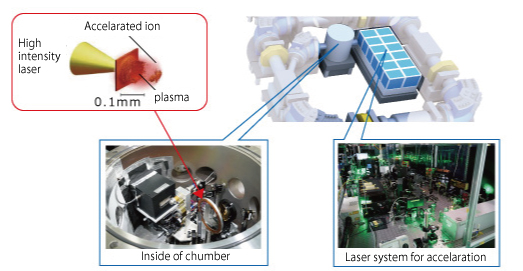
We demonstrate the ability of a laser-driven injector to operate repetitively. This injector is comparable to a conventional injector. (Supported by the “Mirai Program” of the Japan Science and Technology Agency)
The rotating gantry with high-temperature superconducting magnets
The high-temperature superconducting magnet technology will further reduce the size of the existing heavy ion rotating gantry (11 m in diameter and 13 m in length) to about half of its present diameter and length, thus allowing it to be installed in a standard radiotherapy room.
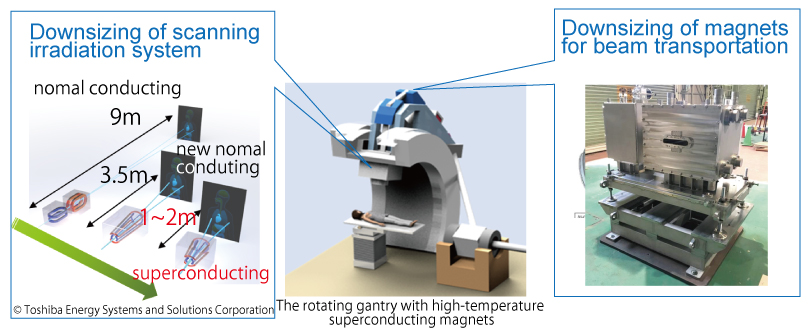
A high-temperature superconducting magnet (right), developed in collaboration with Kyoto University, Toshiba Corporation, and KEK, has demonstrated the stable transport of carbon-ion beams in a magnetic field as high as about 2.5 Tesla. High-temperature superconducting magnet technology is expected to contribute not only to the downsizing and energy saving of various particle accelerators but also to a wide variety of fields.
Microsurgery system
The emittance collimator reduces the diameter of the irradiation beam from 5 mm to 1–3 mm and increases the accuracy of the irradiation from 0.1 to 1 mm. This will expand the indications for heavy-ion therapy to include benign tumors, age-related macular degeneration of the retina, vascular diseases such as cerebral aneurysms, and neurological diseases such as epilepsy.
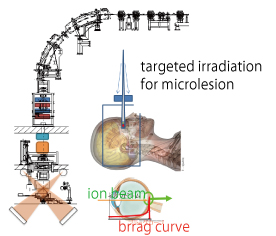
Realizing a "zero cancer deaths and a healthy, long-lived society" with Quantum Scalpels at the core
To achieve "zero cancer deaths and a healthy, long-lived society", it is important to develop innovative cancer treatments, but it is also important to maintain a high QOL during and after cancer treatment. Therefore, medical costs of cancer treatments must not be expensive. To provide affordable medical care that maintains a high QOL, QST is also working on developing a targeted radioisotope therapy that irradiates cancer from inside the body by administering radiopharmaceuticals that emit alpha particles, in addition to the "quantum scalpel" system. By combining these technologies with immunotherapy and other therapies, we aim to make it possible to treat cancer while working, without resection. By spreading the “Quantum Scalpels” technique around the world, people suffering from cancer around the world will have access to affordable and effective cancer treatment.
